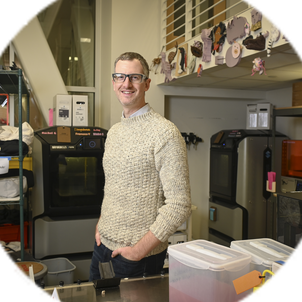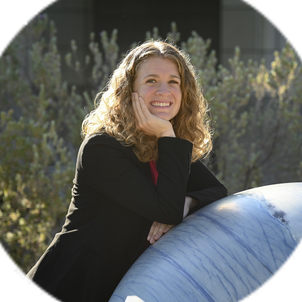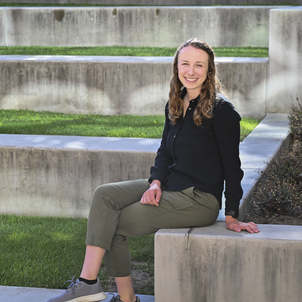Together, we would count that the right amount of steel was there to protect a structure. I was fascinated by how much creativity and power lay in the work that my dad and my mom, an architect, did. How they could design things in their minds and then turn them into real world objects.
In 2011, I earned my master’s in architecture from the University of Tokyo in Japan when a major tsunami hit, so I came back to my hometown of Corfu, Greece, without a concrete plan B. All I knew was that I wanted to continue to a PhD and pursue a research career. I started working as an architect, and because Corfu is a small island and a very old city with historical buildings that date back to the 1500s and earlier — parts of it are recognized as a UNESCO World Heritage site — I worked on a lot of renovation projects. It was a tedious process. I spent hours with a tape measure trying to triangulate dimensions of spaces to figure out very rudimentary floor plans. The challenges I faced there got me thinking about better ways to approach that kind of work. That’s how I got into engineering. One of my main goals was to simplify not only my life but also the lives of other engineers. I started looking into how computer science — and specifically computer vision — could help render more accurate site measurements using laser scanners that create models using 3D points in space.
I was a year into my role as a visiting researcher at Stanford’s Department of Computer Science when I applied for my PhD in the Department of Civil and Environmental Engineering. After I got in, I continued working on ways to refine site data. My PhD was interdisciplinary from start to finish. That’s one of my core strengths: combining worlds. I find real world problems in the architecture, engineering, and construction fields, and solve them with computer vision. These days, I mainly work with data representations. I create geometric, semantic, and topological associations across laser-scanned data to understand how our spaces change over time. Construction sites are a domain where we have almost no accurate quantitative information about these things. I want to build more sustainable buildings and renovate existing ones to be more sustainable and suitable for users.
The problem right now is that architects design a space and someone builds it and that’s it. They don’t ever get feedback from how a user interacts with the space, like whether it has been functional or safe for them. My goal is to be able to establish a feedback loop for the architect. By using visual data from cameras and laser scans to understand how spaces — whether new constructions or older buildings — change over time, we can identify ways to make them better for people. When we talk about sustainability, we mention reducing CO2 emissions or using less raw materials, which of course are two very important things to tackle. However, if we build buildings that are not suitable for users, at some point we will have to tear them down to build something that is more suitable. Starting off on sustainable footing is smarter because it reduces cost, CO2 emissions, and the amount of raw materials needed to complete a project.
I’m excited to come back to Stanford this fall because I’ve already experienced the magic of the Department of Civil and Environmental Engineering as a PhD student, and I’m hoping to bring that perspective to my new role as a faculty member. I’ve experienced what it’s like to navigate this particular PhD program, so by sharing my honest experiences — including my mistakes — I’m hoping to foster my own PhD students through a process that helped me become a stronger researcher.
One of the best things about Stanford is that everybody is very open. I never felt inhibited by hierarchy, I only witnessed an openness to creative ideas. I’m very excited to reconnect to that collaborative energy again. I’ve also missed certain things about the campus, like walking around the Loop, a popular and leafy bike path through Stanford and Palo Alto. Also, since I was born on an island and being in the water is second nature to me, I’m excited to get back into the pool at the Avery Aquatic Center.
Related spotlights

Dan Somen

Sonia Martin


